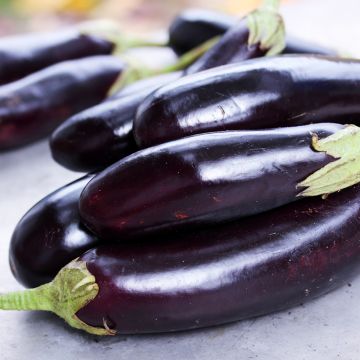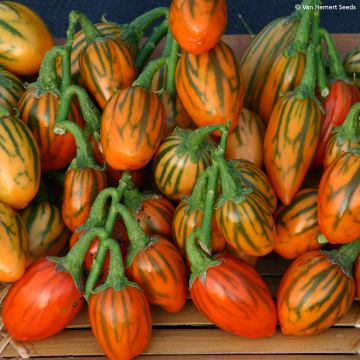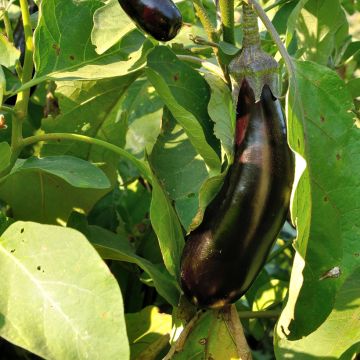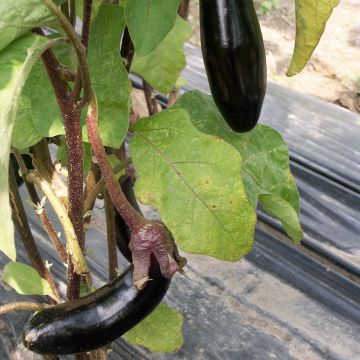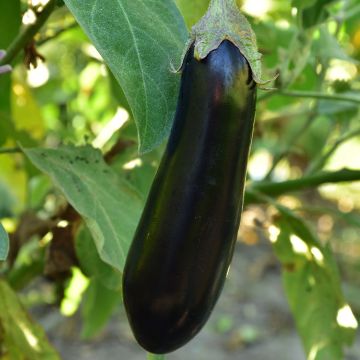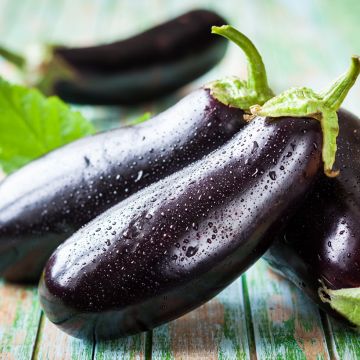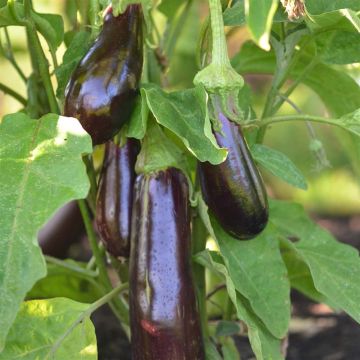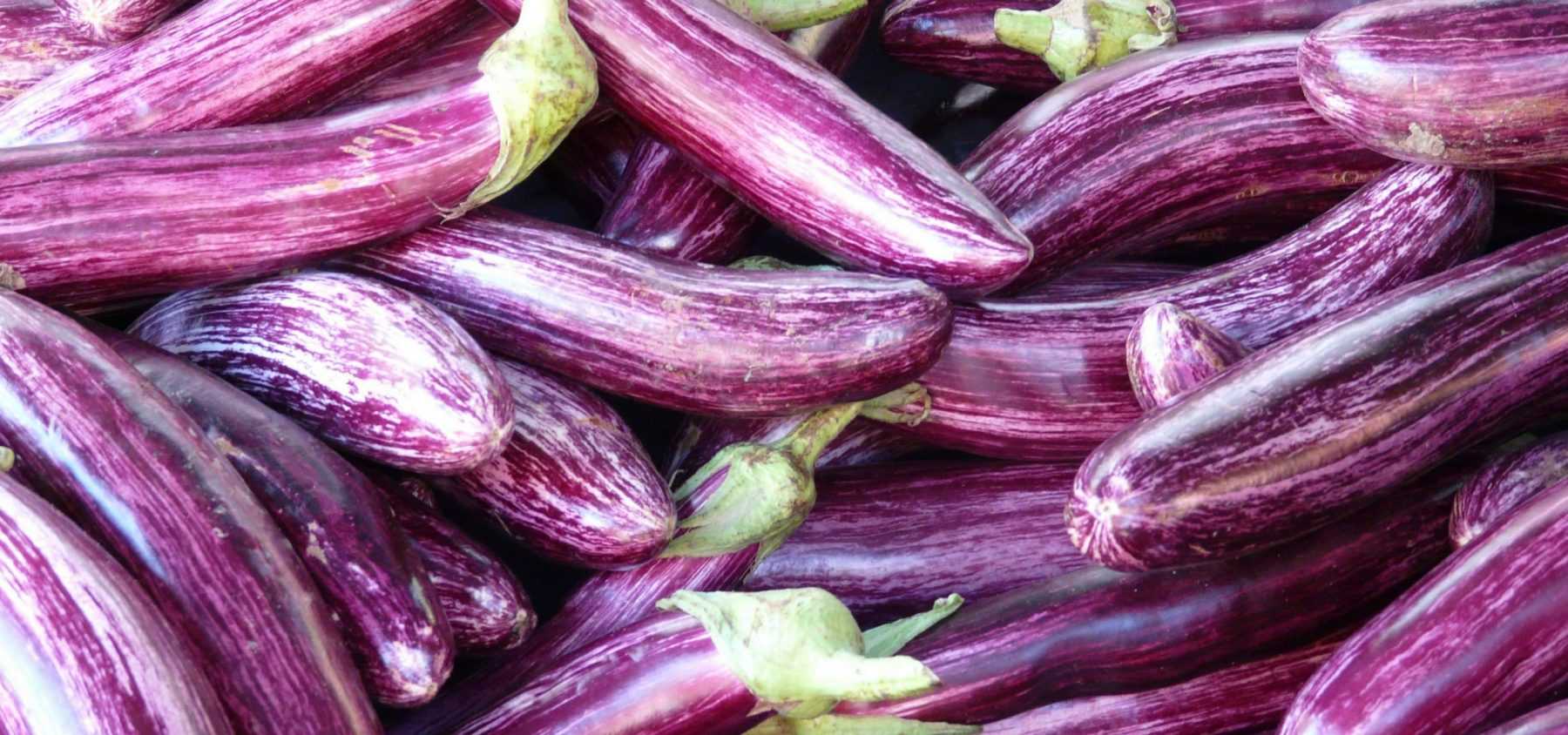
Growing aubergines successfully
How to sow, plant and care for them
Contents
Aubergine is a quintessential summer vegetable and a staple of Mediterranean cuisine! It is prized for its fleshy fruits with smooth, shiny skin and a mild, subtle flavour. Belonging to the same family as tomatoes, the Solanaceae, aubergines come in many varieties, distinguished by their colour (ranging from deep purple, almost black, to white, with shades of mauve and pink) as well as their shape (elongated or round). Aubergines can be pan-fried or oven-baked when stuffed, and are essential in ratatouille! Discover all our tips for successfully growing them in your vegetable garden to enjoy bountiful harvests.
Where to plant aubergines?
Aubergines are demanding plants, they thrive in rich, well-draining soil and require plenty of warmth and sunlight to fruit successfully. They should therefore be planted in a sunny spot, ideally sheltered from cold winds.
In regions with cool or rainy summers, growing under cover (greenhouse, polytunnel) is recommended. It’s worth noting that some varieties, such as ‘Bonica F1’, can tolerate these types of climates.
In the vegetable garden, aubergines grow well alongside all legumes (Fabaceae) (peas, beans…) which provide them with nitrogen, as well as with French marigolds which repel nematodes. However, avoid planting them near other nightshades like tomatoes, potatoes, peppers, and chillies.
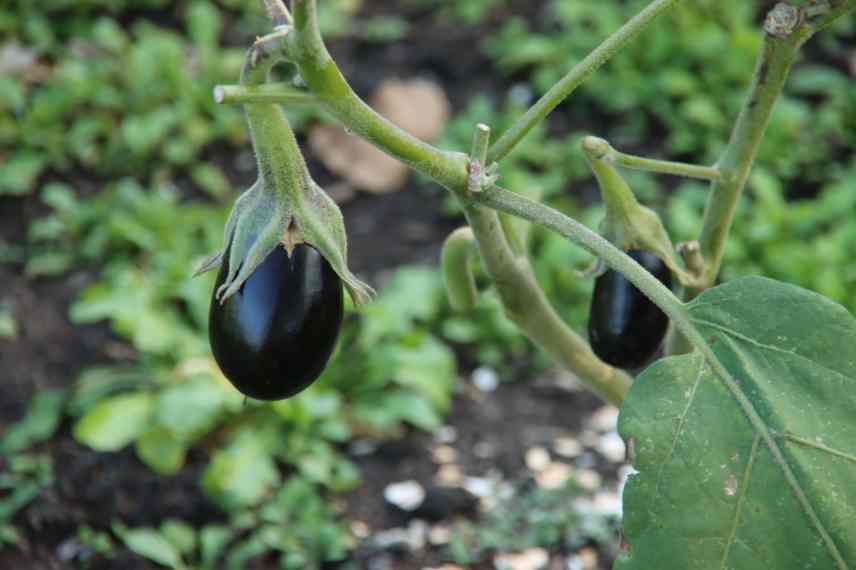
Read also
Sowing with heat or on a hotbedWhen and how to sow them?
Sowing is generally done in March. It should be carried out indoors in a warm environment or in a heated greenhouse, with the optimal temperature being 25°C. Using a heated propagator or placing seed trays on a radiator improves germination. Direct sowing is possible but reserved for Mediterranean climates.
- Fill pots with special seed compost.
- Sow the seeds on the surface.
- Cover them with a thin layer of compost.
- Water with a fine spray.
- Place the pots in a bright spot, out of direct sunlight.
Discover other Eggplant seeds
View all →Available in 1 sizes
Available in 1 sizes
Available in 1 sizes
Available in 1 sizes
Available in 1 sizes
Available in 1 sizes
Available in 1 sizes
Available in 1 sizes
Available in 1 sizes
Available in 1 sizes
When and how to plant aubergines?
Planting in the garden should be done once all risk of frost has passed, typically after mid-May, or even June in cooler regions, as aubergine plants only thrive when temperatures reach at least 15°C. Prepare the soil by weeding and loosening it (or use large pots for balcony planting). Space the plants 50 to 60 cm apart.
- Dig a hole 2 to 3 times the size of the root ball.
- Feel free to mix well-rotted compost into the soil, and optionally some coarse sand for drainage.
- Place your plant in the centre of the hole, with the graft union at soil level.
- Fill the hole with soil and gently firm it down.
- Water thoroughly.
- You can add a layer of mulch around the plant to help retain soil moisture.
Staking the plants isn’t essential but is highly recommended in windy locations.
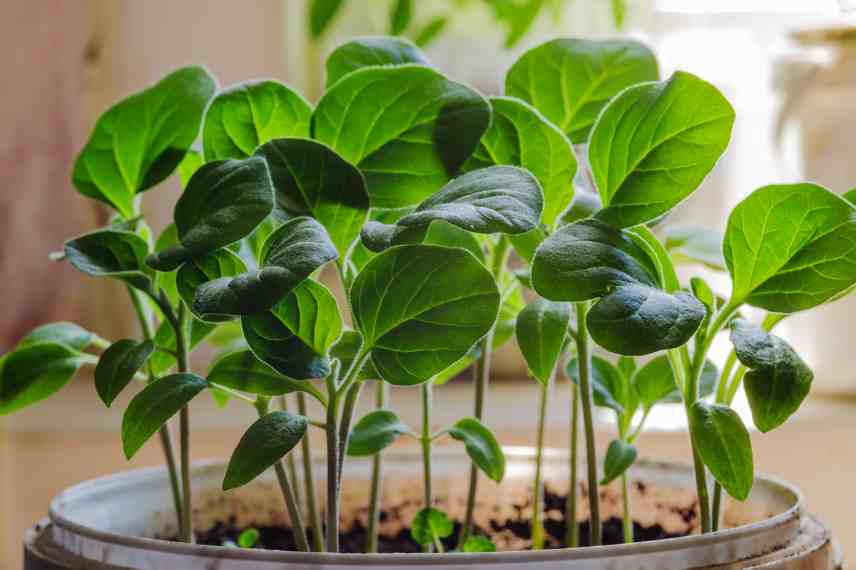
How to care for them?
To speed up production and obtain larger fruits, you can prune your aubergine plants. Pruning is recommended but not essential.
The process is simple:
- Remove side shoots and pinch out the plant when it has formed 2 or 3 flower clusters to encourage branching,
- Remove the “suckers” that develop at the base, as they tend to unnecessarily drain the plant’s energy.
Aubergines are fairly tolerant when it comes to watering, but don’t space out watering too much. Always use water at room temperature and water at the base of the plants, avoiding wetting the foliage. A thick mulch will help reduce watering frequency while minimising weeding, hoeing and cultivation work.
What are the pests and diseases affecting aubergines?
Aubergines are relatively sensitive plants. Among potential pests, you may encounter aphids, whiteflies (under cover), and Colorado potato beetles. Whiteflies and aphids can be easily eliminated by spraying with a peppermint-based solution or water mixed with black soap. In case of Colorado potato beetle infestation, handpick and destroy them, then spray with a natural pyrethrum-based insecticide. Sowing flax nearby can also help keep them at bay.
Like tomatoes, aubergines can be affected by blight. This fungal disease manifests as dark spots on the leaves. As both prevention and treatment, spray with Bordeaux mixture (2 grams per litre of water) and repeat after each rainfall. For long-term protection, practice good crop rotation by not planting aubergines in the same spot for at least 5 years.
→ Learn more about aubergine diseases and pests
When to harvest aubergines?
Aubergines are harvested from July to October, picked as needed and as they develop.
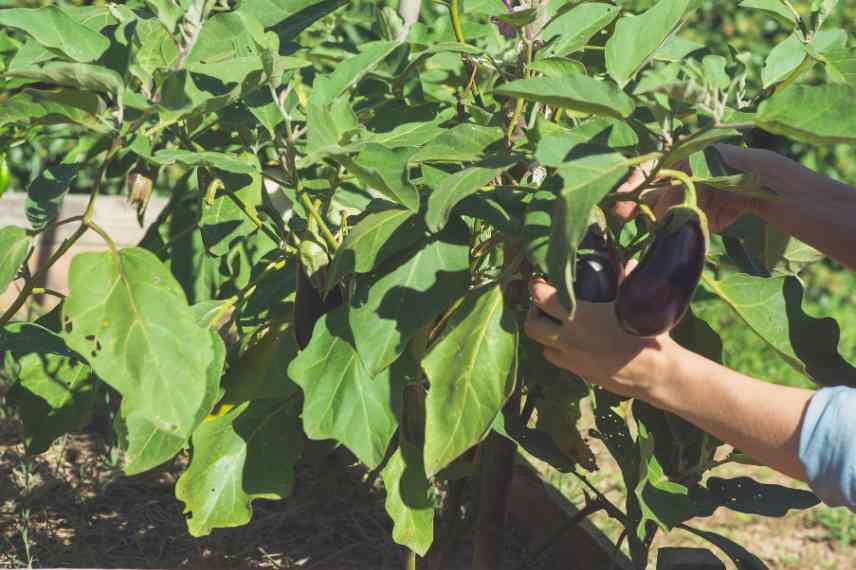
To go further
To learn all about growing aubergines, check out our comprehensive guide: Aubergines.
- Subscribe!
- Contents


































